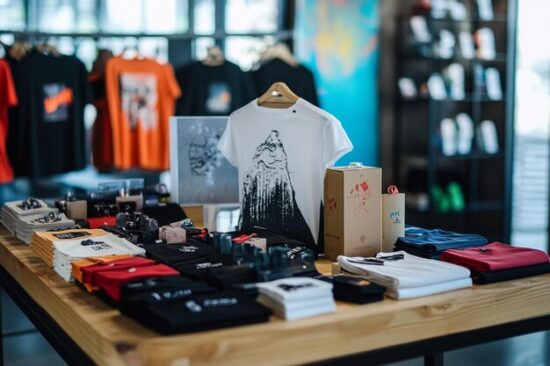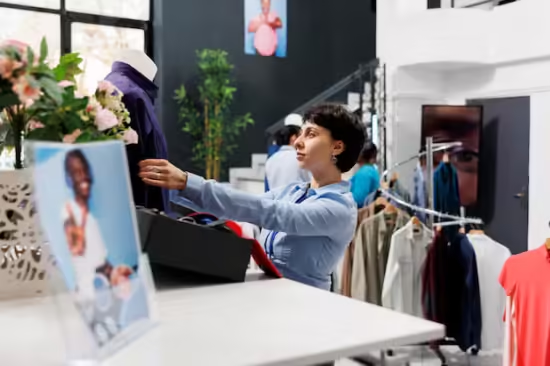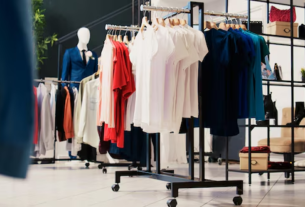What is Visual Merchandising? – Visual Merchandising, a blend of artistry and technical expertise, is the key to transforming a retail space into a captivating and interactive environment. It encompasses the store layout, product arrangement, lighting, signage, and thematic displays, all aimed at creating a unique shopping experience that attracts customers and encourages exploration, engagement, and purchases.
This strategy goes beyond mere aesthetics; it is about crafting retail areas that impact patron behavior and maximize sales. Effective Visual Merchandising transforms a simple store into an immersive buying experience with a cohesive and compelling presentation of every detail, from coloration schemes to product placement.
The profound influence of visual merchandising on customer behavior cannot be overstated. Well-designed store layouts and eye-catching displays not only increase foot traffic but also drive sales. For instance, strategically placing high-demand products or creating thematic displays during seasonal promotions can instantly grab consumer attention and lead to impulse buys.
Research suggests that effective visual merchandising can boost sales by up to 15%. Moreover, it plays a crucial role in reinforcing a store’s brand identity, making the shopping experience memorable, and fostering consumer loyalty through consistent visual elements.

Exploring the Basics of Visual Merchandising
Delving into the fundamentals, visual merchandising shapes how clients engage with a shop. The save format organizes the interior area logically and intuitively, improving the purchasing experience by guiding customers through various sections.
Strategic product placement guarantees that key gadgets are positioned in a way that makes them visible at maximum, while shows serve to draw and interact by showcasing merchandise in appealing setups, whether thematic, seasonal, or promotional.
Lighting and signage are also crucial. Proper lighting fixtures enhance product visibility and unite the shop’s atmosphere, while clean signage allows clients to navigate, offering an uninterrupted buying experience. These factors, when blended efficaciously, forge a compelling purchasing environment that draws extra clients and drives sales.
The Impact of Visual Merchandising on Customer Behavior
Visual Merchandising significantly influences how customers perceive and interact with a retail space. The first impression is crucial; a shop’s visual appeal can dramatically impact a customer’s decision to enter. Emotional connections driven by aesthetic elements like color schemes and thematic displays significantly affect customer satisfaction and loyalty.
Furthermore, visible merchandising enhances navigation and convenience, decreasing purchaser frustration and inspiring exploration. This ease of motion can lead to greater impulse purchases, as customers are likelier to buy spontaneously. At the same time, products are efficaciously highlighted through strategic placements and captivating shows.

Benefits of Visual Merchandising
The advantages of visual merchandising extend far past aesthetics, offering tangible benefits that beautify the shop’s overall performance and the purchaser’s experience. It boosts sales by setting high for and excessive-margin products in distinguished locations.
An engaging shop layout and thoughtful product arrangements make shopping fun and convenient. They enhance purchaser pride and inspire longer visits, which regularly result in expanded purchases. Consistently implemented visual merchandising strengthens a store’s emblem identity, aligning the design factors with the brand’s messaging to create a memorable purchasing experience.
This no longer only draws customers but also builds loyalty and repeat business. Additionally, visually attractive setups and strategic product shows increase shop traffic and consumer engagement, making the shop extra inviting and interactive.
Conclusion
In conclusion, visual merchandising is an important element in retail that extends past easy aesthetics to create compelling purchasing surroundings. Through thoughtful layouts of store layouts, product placements, presentations, lighting, and signage, stores can significantly impact consumer conduct and pressure sales.
Effective visual merchandising no longer enhances the consumer experience and strengthens logo identification but also promotes impulse shopping, making the shopping journey more exciting and intuitive. By understanding and imposing visible merchandising principles, stores can rework a basic retail area into a fascinating, immersive experience that draws clients and encourages them to return.
The myriad advantages of visible merchandising—from improved income and stepped-forward shop site visitors to better logo reputation and patron engagement—underscore its important position in accomplishing retail success.
Frequently Asked Questions About Visual Merchandising
What is visual merchandising?
It includes designing and arranging a retail area to attract and engage clients through visually appealing presentations, effective keep layouts, and strategic product placements.
What is the role of a visual merchandiser?
They are accountable for the visible method of a retail store, growing attractive presentations, and optimizing the shopping experience.
What is the main goal of visual merchandising?
To enhance the purchasing experience, develop an inviting and engaging environment that encourages exploration and increases sales.
Why is visual merchandising important in retail?
Visual merchandising is crucial in retail as it not only influences customer behavior and boosts sales but also plays a significant role in creating a memorable brand experience that resonates with customers.
What are the two types of visual merchandising?
Front-quit merchandising specializes in attracting customers from outside. At the same time, back-end vending optimizes the indoor format and product shows to beautify the purchasing experience.
Read This: https://topalways.co.uk/what-is-retail-merchandising/


